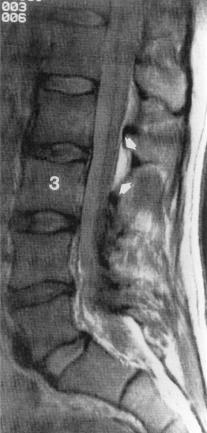Physical Address
304 North Cardinal St.
Dorchester Center, MA 02124
A 25-year-old woman undergoes spinal anesthesia with a 25-gauge Quincke needle for outpatient hysteroscopy. The following day, she complains of a severe headache. Her headache is worse when she is in the upright position and resolves when she is supine.
The author wishes to thank Dr. Matthew P. Feuer and Dr. Spencer S. Liu for their contributions to the previous edition of this chapter.
Post–dural puncture headache (PDPH) is a well-known complication of spinal anesthesia. It commonly occurs 24 to 48 hours after dural puncture (in 92% of affected patients), but the presentation can be delayed for as long as 5 days. Loss of cerebrospinal fluid (CSF) from the puncture site is the key initiating factor ( Fig. 178.1 ), with reduction in CSF fluid and pressure. This allows sagging of the brain and supporting structures when the patient assumes the upright position. Sagging of the brain places direct traction on pain-sensitive structures and can also cause painful reflex vasodilation of cerebral blood vessels. This theory is also supported by PDPH’s pathognomonic feature of occurrence or exacerbation in the upright position and resolution in the supine position. Typically, 70% of PDPHs resolve spontaneously by 1 week after dural puncture, and 95% resolve by 6 weeks.

PDPH should be considered a diagnosis of exclusion. Medical conditions that have been misdiagnosed as PDPH include hypothalamic tumors, eclampsia, spinal meningitis, and superior sagittal sinus thrombosis.
Clinical features of PDPH include the following:
History of dural puncture
Positional nature of headache (exacerbated when upright within 15 minutes and resolved when supine after 15 minutes)
Headache that is typically frontal or occipital in nature
Headache plus one of the following symptoms: neck stiffness, tinnitus, hypacusia, photophobia
Spontaneous resolution within 1 week after dural puncture (95% of cases; if headache persists, consider other diagnoses)
Resolves within 48 hours of blood patch
Become a Clinical Tree membership for Full access and enjoy Unlimited articles
If you are a member. Log in here